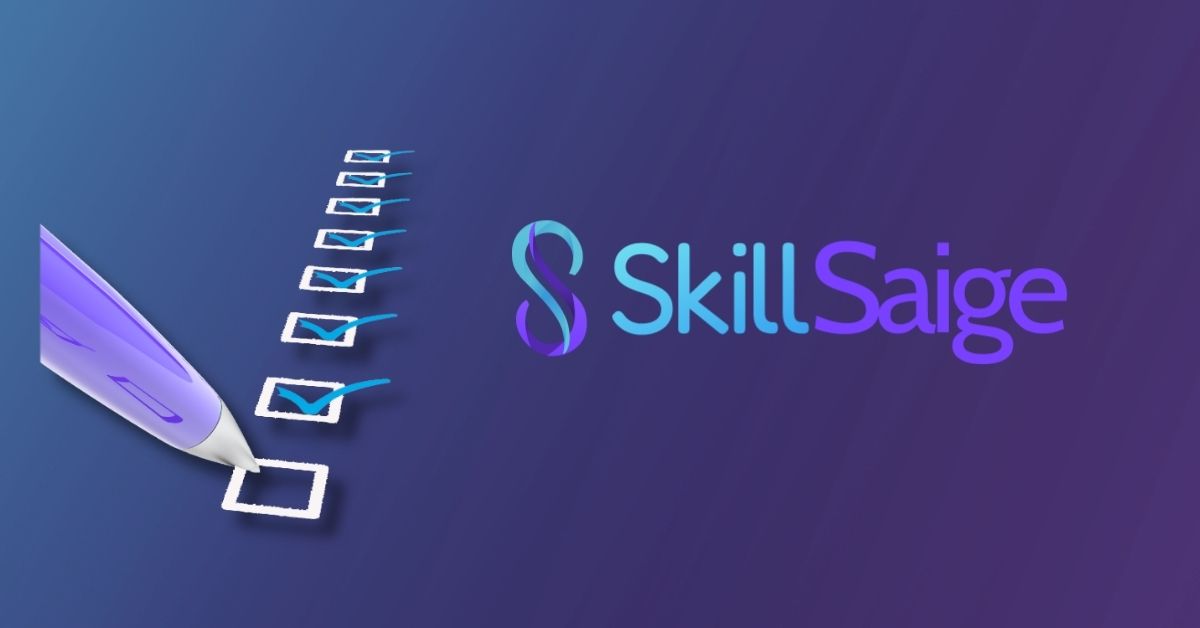The Professional's Guide to Prepare for Interview Mastery
29 Jul 2025 – SkillSaige Team
Securing your dream job starts with interview excellence. This guide combines proven interview tips and tricks with a comprehensive approach to help you present your best professional self—from research to follow-up.
Ready to practice live and interactive interview questions? Practice for free using SkillSaige now on iOS (Android coming soon).
1. Conduct Thorough Company Research. Go beyond basic website browsing by:
- Reviewing recent press releases and financial reports (for public companies), and Glassdoor reviews
- Studying employee profiles on LinkedIn to understand team backgrounds
- Analyzing the company’s social media presence and engagement style
2. Professional Name Etiquette for Interviews
- Research interviewers: Verify interviewers’ full names and correct pronunciations. Check LinkedIn profiles or company bios for reference. Confirm politely: Call the secretary to confirm the names of the interviewers.
- Use names naturally: 2-3 times during conversation (e.g., “As you mentioned, [Name]…“). Avoid overuse to sound forced.
- Remember to note the names of support staff, including receptionists/coordinators. They often provide hiring feedback and are a key gatekeeper.
Why it matters: 1. Demonstrates preparation and respect 2. Builds immediate rapport 3. Highlights interpersonal skills
3. Ace Behavioral Interview Questions Master behavioral interviews by structuring answers with the STAR interview method (situation task action result) approach. This approach transforms your experience into compelling evidence of your problem solving skills and professional value:
- Focus on specific challenges, collaborative actions, and quantifiable outcomes.
- Always prepare polished 90-second responses to these questions that directly connect your measurable achievements to the role’s requirements.
- What are your weaknesses and strengths interview questions. (Check out how to answer the 20 hardest questions in Ace Interviews Questions Part 1 )
4. Optimize Your Professional Presentation Consider these often-overlooked details:
- Be early: Aim to arrive 5-10 minutes before your scheduled interview time. This shows professionalism while respecting everyone’s schedule.
- Online interview tips: camera positioning at eye level and neutral background lighting
- What to bring to an interview: breath mints, a portfolio with work samples, and a professional-looking notebook
- Appropriate technology: fully charged devices and backup connection options
- What to wear to an interview: Research the company’s dress code and opt for attire slightly more formal than their norm: suits for conservative fields, smart business casual for creative roles. Prioritize clean, well-fitted clothing and minimal accessories to project professionalism.
5. Positive Body Language in Interviews Your body language in the interview speaks volumes before you even answer a question. Together, these cues reinforce your verbal responses, making you appear polished, confident, and genuinely interested in the role.
- Maintain strong eye contact demonstrates engagement and confidence
- Offering a firm (but not overpowering) handshake establishes professionalism from the first impression.
- Sit in an upright, relaxed posture to convey both alertness and approachability.
- Use natural hand gestures to emphasize key points—this shows enthusiasm without appearing distracting.
- Avoid fidgeting or closed-off positions (like crossed arms), as calm, controlled movements project composure and credibility.
6. End of Interview Questions: Your thoughtful questions at the interview’s end prove your engagement. This demonstrates both curiosity and strategic thinking about the role’s realities. Ask about:
- Team dynamics
- Success metrics (e.g., ‘How is performance measured in the first 6 months?’)
- Current challenges
- New employee mistakes: What are some mistakes new employees make so I can avoid them/be aware of them
7. Create a Strategic Follow-Up Plan Move beyond basic thank-you notes with:
- Write a reference to a specific discussion point from your interview
- Additional information addressing any unanswered questions from the meeting
- Send both a follow up email after interview (within 24 hours) and a separate interview thank you email to each panelist.
- Use the follow-up to reiterate your qualifications and the thank-you to personalize your appreciation.
- Set calendar reminders for polite check-ins while preparing for potential next steps.
This refined approach transforms standard interview preparation into a strategic advantage, showcasing exactly how to prepare for an interview with professionalism, attention to detail, and genuine engagement. Remember that every interaction builds your professional network, whether you land this role or not.
Ready to practice live and interactive interview questions? Practice for free using SkillSaige
Related Posts
SkillSaige Unveils Major Update
SkillSaige Unveils Major Update: Smarter Home Experience, Daily Rewards, and a More Engaging Platform
17 Nov 2025
The Unwritten Rules of Professionalism: How to Navigate Company Culture Without Losing Your Mind
Landing your first job (or even your fifth) isn’t just about hard skills and experience. It’s about mastering the unspoken rules of professionalism and office etiquette. And let’s be honest: no one hands you a manual titled “How to Not Accidentally Annoy Your Boss While Still Being Yourself.”
30 Sep 2025
How to Showcase Achievements in Your Cover Letter (Using the STAR Method)
Most job seekers’ cover letters for resumes miss the mark, but yours won’t. If you’ve ever wondered how to write a cover letter that actually gets read, you’re not alone. The secret? Speak directly to hiring managers and job recruiters by blending professionalism with personality. This guide cuts through the noise with actionable strategies to make your application impossible to ignore.
25 Sep 2025
